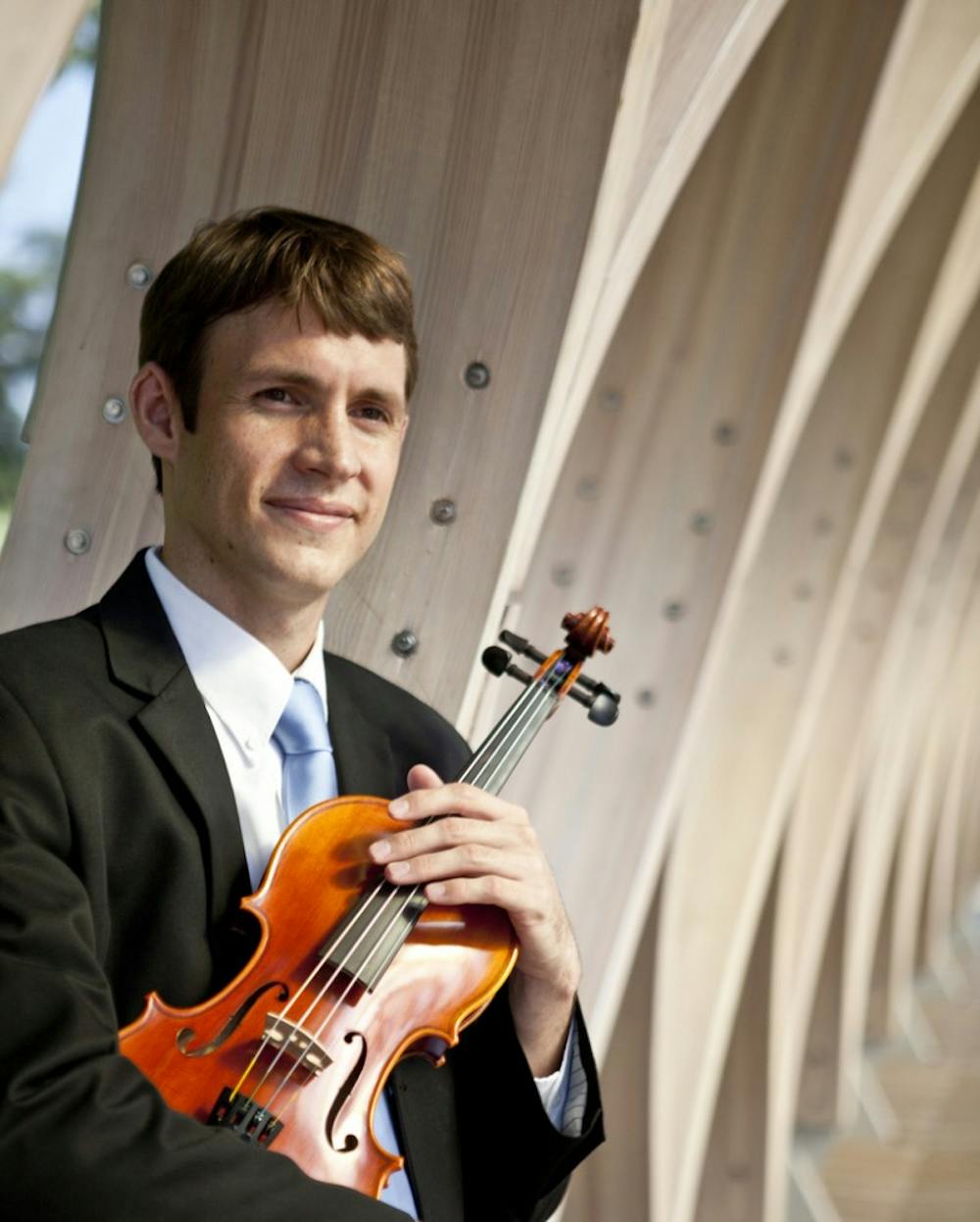The auditorium fell silent. Four musicians walked on stage – Dmitri Pogorelov, Jean Hatmaker, Ai Ishia and Francois Henkins – carrying violins, a viola and a cello. The group sat and raised their bows. With one unified breath the quartet began to play.
The Kontras Quartet performed Feb. 28 in Whitley Auditorium as part of The Mary Duke Biddle Chamber Recital Series.
The ensemble has toured together since 2009, but this was the group’s first time at Elon. They are no stranger to North Carolina — the ensemble performs more than 70 times a year in the state.
They are a diverse group, each from different countries around the world, including the United States, Japan, Russia and South Africa.
The first piece the musicians performed was “String Quartet No. 3 in A Major, Op. 41” by Robert Schumann. Pogorelov said that Schumann called the piece “a beautiful lyrical, songlike movement.”
The four different movements of Schumann’s piece seemed to tell a story and allowed the audience to follow along with each pause.
Every breath the musicians took could be heard in the audience. Their energy was tangible as they all swayed with each stroke of the bow, creating notes of different pitches and qualities. The quartet’s focus never wavered, not even when Pogorelov balanced his violin under his chin without his hands during a pause.
Kontras means “contrasts” in Henkins’ native language, Afrikaans. Because their backgrounds vary, the cultural differences allow them to arrange unique interpretations of various songs. The contrast of the performance showed in each of the three songs. No matter the tempo or rhythm, the ensemble was able to explore different themes with a professional confidence.
Pogorelov introduced the second song by Dimitri Shostakovich as a composition the audience could discover and define for themselves. It consisted of five movements. Each section of the song had a different emotion and power behind it.
The music changed pace when the quartet started using their fingers to pluck the instruments’ strings to create a staccato sound.
The three performances were a mixture of fast and soft music, allowing the audience to sample many genres. Kontras kept the audience engaged through changing tempos and emotions.
With such actively changing music, the Kontras Quartet can reach out to people of all backgrounds via music. The ensemble’s passion for the art helps generate enthusiasm for audience members of all ages.
For the last piece, Hatmaker, the cello player, said she referred to the performances as the “sh” concert because the pieces started quietly. All of the three composers’ names also start with ‘sh.’
The final piece used a lot of repetition. Hatmaker said the third movement was a minuet – a slow, stately ballroom dance. The fourth and final movement was more lively.
“It’s a delightfully charming piece,” Hatmaker said.
At the end, each musician left his or her instruments gracefully. They stood, bowed and left the stage with the same elegance they held throughout the entire performance.


